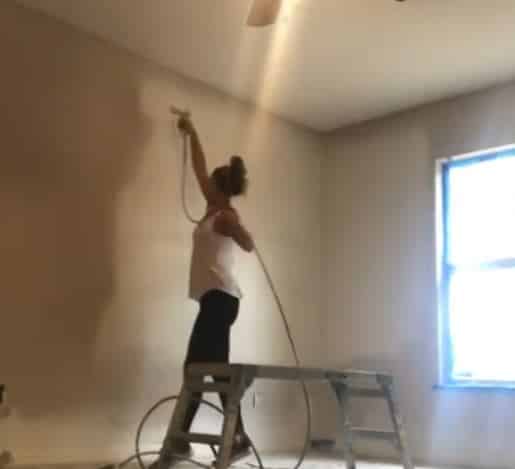How Much Paint Does An Airless Sprayer Use
If you’re planning on using an airless paint sprayer for your next painting project, it’s important to have an idea of how much paint you’ll need. Understanding the amount of paint an airless sprayer uses can help you estimate the cost of your project and ensure that you have enough paint on hand. While there are several factors that can affect paint usage with airless sprayers, understanding these factors can help you determine the amount of paint needed for your project.
Airless paint sprayers are a popular choice for painting large surfaces quickly and efficiently. These sprayers work by using a high-pressure pump to force paint through a small opening in the spray gun, creating a fine mist of paint. One of the benefits of using an airless paint sprayer is that it can apply paint much faster than a brush or roller, making it an ideal choice for large painting projects.
Get the Fail-Safe Paint Color Playbook (Free PDF)
36 proven colors • 8 ready palettes • trim & sheen guide • printable testing cards.
Several factors can affect the amount of paint used by an airless paint sprayer. The type of paint you’re using, the surface you’re painting, the nozzle size, and the pressure setting all play a role in paint usage. Thicker paints will require more pressure and may use more paint than thinner paints. Similarly, a rough or textured surface may require more paint than a smooth surface.
In this article, we’ll go over the factors that affect paint usage for airless paint sprayers and how to calculate paint usage for a specific project. We’ll also provide some tips for reducing paint usage with your airless paint sprayer, so you can save money on your painting project.

Understanding Airless Paint Sprayers
Airless paint sprayers are a popular choice for painting large surfaces quickly and efficiently. These sprayers work by using a high-pressure pump to force paint through a small opening in the spray gun, creating a fine mist of paint. One of the benefits of using an airless paint sprayer is that it can apply paint much faster than a brush or roller, making it an ideal choice for large painting projects.
Factors That Affect Paint Usage
Several factors can affect the amount of paint used by an airless paint sprayer. The type of paint you’re using, the surface you’re painting, the nozzle size, and the pressure setting all play a role in paint usage. For example, thicker paints will require more pressure and may use more paint than thinner paints. Similarly, a rough or textured surface may require more paint than a smooth surface.
Calculating Paint Usage for an Airless Sprayer
To calculate the amount of paint needed for a specific project, you’ll need to know the surface area to be painted and the number of coats required. Once you have this information, you can use the following formula to calculate the amount of paint needed:
Amount of paint (in gallons) = surface area (in square feet) ÷ coverage rate (in square feet per gallon) ÷ number of coats
For example, if you’re painting a 10×12 foot room with an eight-foot ceiling and plan to apply two coats of paint, you’ll need to calculate the total surface area as follows:
10 x 12 (walls) + 10 x 8 (ceiling) + 12 x 8 (ceiling) = 456 square feet
If the paint you’re using has a coverage rate of 350 square feet per gallon, you’ll need to divide the surface area by the coverage rate:
Get the Fail-Safe Paint Color Playbook (Free PDF)
36 proven colors • 8 ready palettes • trim & sheen guide • printable testing cards.
456 ÷ 350 = 1.3 gallons
Finally, divide the total amount of paint by the number of coats:
1.3 ÷ 2 = 0.65 gallons per coat
Tips for Reducing Paint Usage
If you’re looking to reduce paint usage with your airless paint sprayer, there are several tips you can follow. These include using the right pressure setting, using the right nozzle size, properly thinning the paint, and properly maintaining and cleaning the sprayer. By following these tips, you can reduce the amount of paint used and save money on your painting project.
Get the Fail-Safe Paint Color Playbook (Free PDF)
36 proven colors • 8 ready palettes • trim & sheen guide • printable testing cards.
Conclusion
Understanding how much paint an airless paint sprayer uses is an important part of planning for any painting project. By considering the factors that affect paint usage and properly calculating the amount of paint needed, you can ensure a successful and cost-effective project. Remember to follow safety precautions and properly maintain your equipment for best results.
